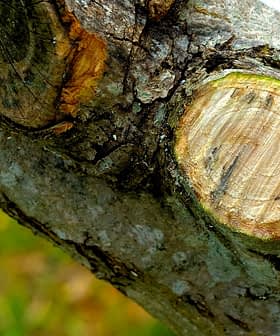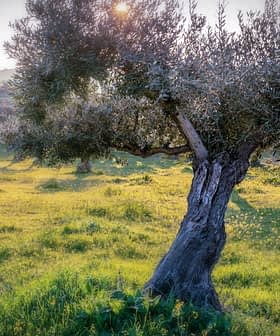Europe Puzzled by Olive Tree Epidemic
Scientists are working to identify the causes and prevent the spread of a destructive disease affecting olive trees in Puglia, Italy, with the European Food Safety Authority investigating the role of the plant pathogen Xylella fastidiosa. EFSA recommends controlling the spread of Xf through measures such as monitoring plant trade and movement, as eradication is unlikely once established outdoors due to the broad host range of the pathogen and its vectors.

Scientists are still trying to pinpoint the causes and determine how to prevent the spread of the devastating disease killing olive trees in the region of Puglia in Italy.
In a recent statement, the European Food Safety Authority (EFSA) said that while the plant pathogen Xylella fastidiosa (Xf) had been detected in olive trees in the Lecce province last month, its specific role in causing the olive disease is still under investigation as fungi and insects have also been reported as associated.
The EFSA report followed a November 11 request from the European Commission for expedited advice. “There is an urgent need to put in place measures to prevent the spread of this harmful organism into other parts of the Union through the movement of relevant plants, plant parts and other products,” the Directorate-General for Health and Consumers said.
No way to eradicate Xf
In its report, EFSA said that there is “no record of successful eradication of X. fastidiosa once established outdoors due the broad host range of the pathogen and its vectors.”
It said that strategies aimed at preventing the spread of Xf and containing the outbreak in Italy should focus on its two main entry pathways — the movement of plants for planting and infective insects in plant consignments — and based on the integrated system approach.
Controls on plant trade and movement recommended
The latter could combine options such as pest free areas; surveillance; certification, screenhouse production, control of vectors and testing for plant propagation material; preparation, treatment and inspection of consignments for the pathway of the infective vectors in plant consignments, EFSA said.
The trade and movement of infected plants for planting (but not seeds) is the most efficient way for long-distance dispersal of Xf however it is also spread by insect vectors (carriers) that generally fly short distances up to 100 metres but can also be transported by wind over long distance or transported on plant consignments.
Xf has recently twice been intercepted in France in infected coffee plants from South and Central America, which shows that “the probability of association with the plants for planting pathway can be rated as likely,” EFSA said.
Importation of citrus and grapevine plants into the EU is forbidden but the trade in other plant species, such as ornamental plants, is huge and rapid, allowing survival of pests and their vector insects, it reported.
More information needed
EFSA said it is hard to control the spread of Xf by spraying insecticides against the carriers unless the epidemiology is very clear. One of the biggest challenges with the olive disease epidemic in southern Italy is that the insect carriers and the strain associated with the disease are yet to be identified.
EFSA said that for now all xylem-fluid feeding insects in Europe should be regarded as potential vectors.
Under its section on recommendations, it advised that “host range, vectors, pathways and risk reduction options are further assessed, once a complete pest risk assessment for X. fastidiosa is conducted for the EU, and once more knowledge has been acquired on the Apulian outbreak of X. fastidiosa.”
What is Xf?
EFSA said that Xf is a bacterial plant pathogen transmitted by xylem-fluid feeding insect vectors and is
associated with a number of important diseases in a wide range of plants.
“Most disease symptoms are associated with bacterial blockage of xylem fluid transport through the plant (water and nutrients). The symptoms of this harmful organism in susceptible host plants vary, but include marginal leaf scorching, wilting of foliage and withering of branches, dieback and stunting with eventual plant death from severe infections.
“The outbreak in Italy is characterised by extensive leaf scorch and dieback of olive trees (Olea europaea), some of which are over 100 years old, over a large area estimated in 8,000 hectares.”
Xf in Italy
EFSA said that the occurrence of X. fastidiosa was reported in Southern Italy (near Lecce, Salento
peninsula, Apulia region) last month as causing quick decline symptoms not only on olive trees (Olea europea), but also oleander and almond trees.
“Investigations showed that symptomatic olive trees were generally affected by a complex of pests: X. fastidiosa, several fungal species belonging to the genus Phaeoacremonium and Phaemoniella, and Zeuzera pyrina (leopard moth).”
Is is the first outbreak of Xf under field conditions in the European Union.









